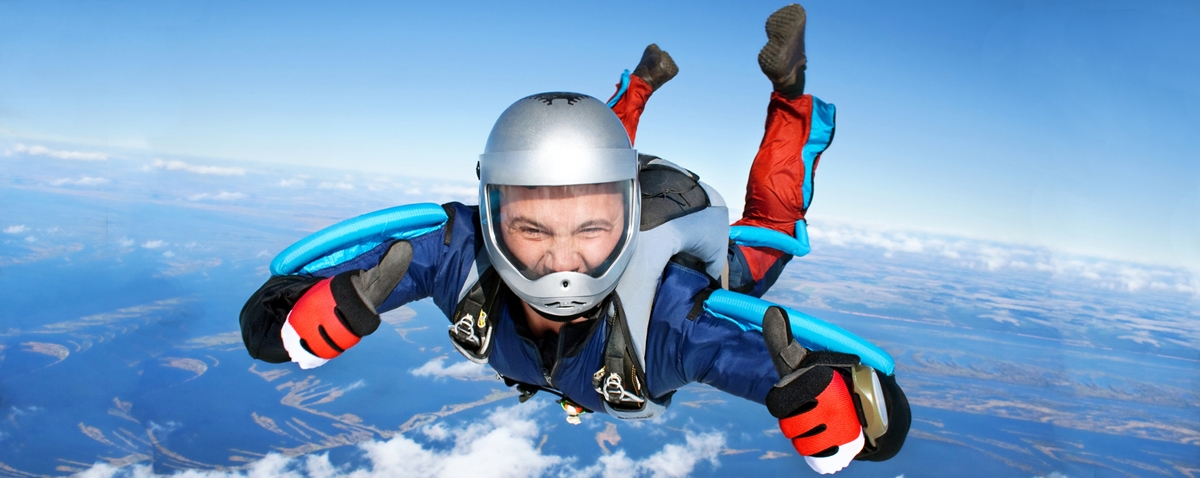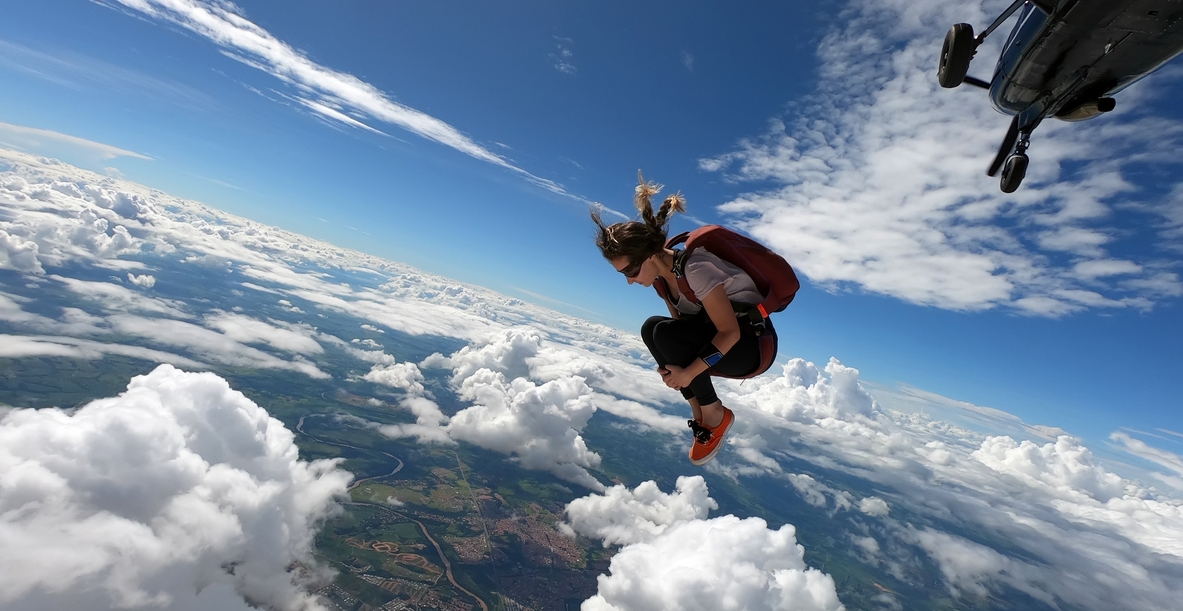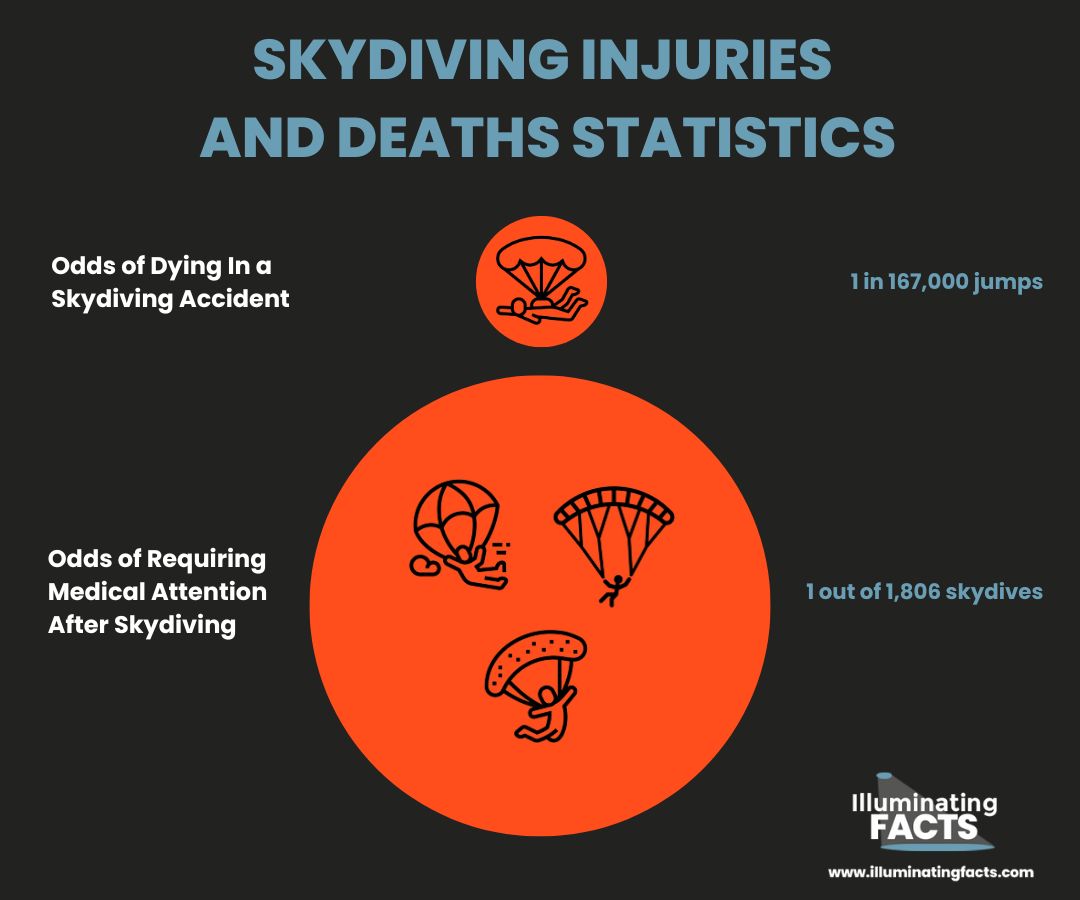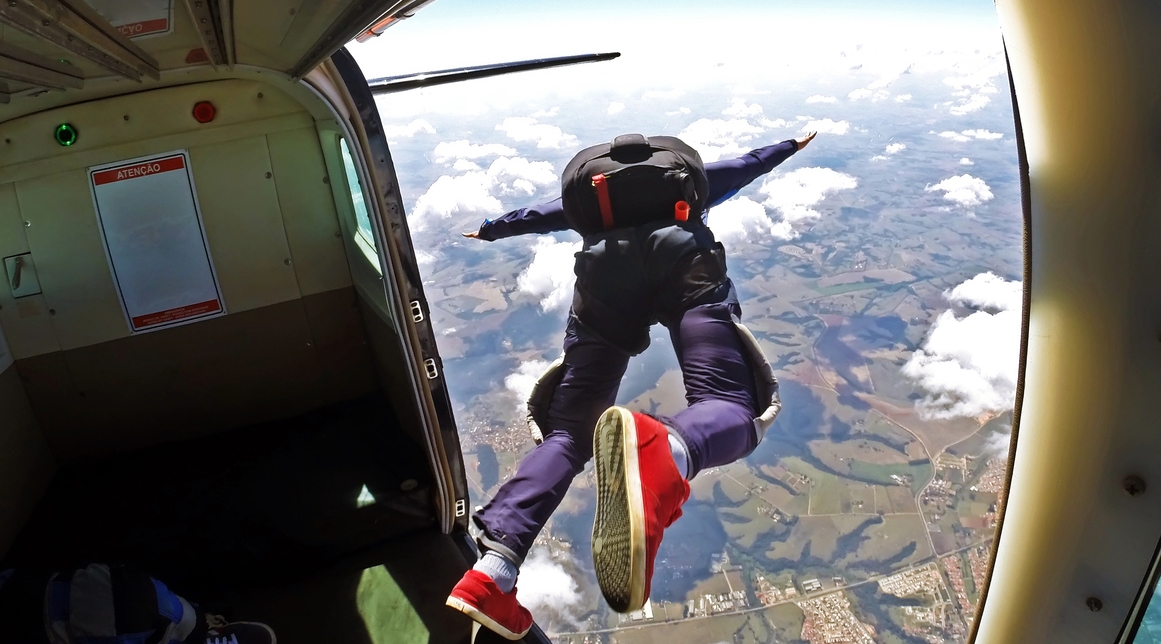Table of Contents
A lot of people have skydiving on their bucket list. While the idea of free-falling from a plane hundreds of feet above the ground may seem frightening, those who love it swear by it. However, there are times when parachute malfunctions have led to injury or death. If you are thinking about making your first jump, you should know more about the odds of a parachute not opening.
The USPA reports that about one in every one-thousand parachutes will experience a malfunction so significant that it actually requires the use of the reserve parachute. [1]
If you are scared of the possibility of a parachute failing to open during skydiving, you need to relax. First, remember that 1:1000 is an extremely rare ratio. Secondly, even if your parachute does fail to inflate properly, you will be all right because most non-functioning parachutes still provide some level of safety.
How Many Parachutes Fail to Open?
While skydiving may seem like a dangerous sport, the truth is that it’s actually much safer than popular opinion suggests. For starters, skydivers are trained to a military standard, meaning they have to be able to respond quickly and efficiently in emergency situations. They also invest heavily in equipment, from their jumpsuits to their parachutes. Finally, all skydivers are required to conduct a thorough safety check before each jump.
Skydiving Safety Stats Compared to Other Activities and Events
The United States Parachute Association reported that in 2015 there were 1,920 injuries requiring medical care out of 3.5 million jumps, or one injury per 1,806 skydives. The odds of dying in a skydiving accident are 1 in 167,000 jumps.[2]
While the comparison isn’t 1 to 1 here the following table shows the odds of dying for the following events in the year 2020 [3].
| Activity | Fatality |
| Skydiving | 1 in every 167,000 jumps |
| Lightning Strike | 1 in 161,856 |
| Dog Bite/Attack | 1 in 112,400 |
| Getting Attacked by Hornets, Wasps, and Bees | 1 in 63,225 people |
| Bicycle Accident | 1 in 4,486 people |
| Chocking on your Food | 1 in 3,461 |
| Motor Vehicle Accident | 1 in 114 |
What can Cause a Parachute Not to Open?
When news reports mention that a skydiver’s parachute failed to open, it may leave listeners with the impression that the equipment malfunctioned. However, skydiving experts point out that it is nearly impossible for an entire parachute to fail.
It is possible that the parachute did not open properly. When a parachute does not open, it is crucial that the jumper take certain actions to ensure their safety. If not, there will be a problem with the parachute.
When talking about the factors that might prevent the successful deployment of a flyable parachute, one’s really talking about three major factors: rigorously maintaining the equipment, packing it correctly, and deploying it in the proper body position.
Following are the major reasons for a parachute malfunctioning: [4]
- The material defects of a parachute, such as tears or weak stitching, can lead to a poorly functioning canopy.
- Skydivers collide with other skydivers or airplanes.
- Skydiving in unpredictable and unfavorable wind conditions.
- The parachute was deployed too late/too low for the skydiver to survive.
- A line entanglement can compromise the inflation process.
- Improper or inadequately packed packaging can result in inflation failure.
- Dangerous maneuvers such as “swooping,” “falling leaf,” and “canopy twist.”
- There is no pull on the parachute during a skydiver’s blackout.
- Choosing a canopy that is not large enough for the wind conditions and weight of the skydiver.
- The body position of a skydiver is not correct when they deploy the parachute.
- The reserve parachute was deployed early.
What Happens If Parachute Fails to Open?
All tandem parachutes have a backup parachute ready to deploy in case the primary chute fails. When a skydiver’s main parachute does not open or has opened with a malfunction, they will jettison that parachute and deploy the reserve chute instead.
The reserve parachute is always the backup in case the main parachute fails. Reserve parachutes are not as accurate as main parachutes but are still reliable.
In short, main parachutes are designed for performance, while reserve parachutes are designed to ensure a safe landing.
Interesting Facts about Parachute Not Opening
Parachute Failure Rate
Out of every 1,000 skydives, only one skydiving parachute malfunctions, according to experts. This means that only .01% of skydiving parachutes experience malfunctions. [5]
Death Rate of Skydiving
In 2021, USPA recorded 10 fatal skydiving accidents, the lowest year on record. The rate was 0.28 fatalities per 100,000 jumps—comparable to the 2020 record of 11 fatal accidents at a rate of 0.39 per 100,000 jumps.
In 2018, 13 skydiving-related deaths occurred out of approximately 3.3 million jumps. [6]
| Fatalities by Decade (Skydiving) | Average Number of Fatalities per Year |
| 1970 – 1979 | 43.5 |
| 1980 – 1989 | 34.1 |
| 1990 – 1999 | 32.3 |
| 2000 – 2009 | 25.8 |
| 2010 – 2019 | 21.3 |
Survival after Parachute Failure
On July 6th, a British soldier survived after his parachute failed to fully deploy during a training exercise. The parachutist was taking part in a High Altitude Low Opening exercise known as Halo when he jumped out of an airplane. [7]
| Name | Altitude (feet) | Nationality | Occupation |
| Vesna Vulović | 33,350 | Yugoslav | Flight Attendant |
| Ivan Chisov | 23,000 | Russia | Air Navigator |
| Alan Magee | 22,000 | United States | Airman |
| Nicholas Alkemade | 18,000 | United Kingdom | Gunner |
| Bear Grylls | 16,000 | United Kingdom | Adventurer |
| Christine McKenzie | 11,000 | South Africa | – |
| Juliane Koepcke | 10,000 | Germany | Mammalogist |
| James Boole | 6,000 | United Kingdom | Pro Skydiver |
Source: [8]
Highest Fall Survived Without a Parachute
Flight attendant Vesna Vulović survived a plane crash on January 26, 1972. The plane, JAT Yugoslav Airlines Flight 367, flew from Stockholm in Sweden to Belgrade in Serbia. The aircraft exploded over Czechoslovakia and crashed into three pieces.
Vesna Vulovic became the only known survivor of a fall of 33,333 feet (10,160 meters; 6.31 miles). She miraculously survived the explosion and crash that killed everyone else on board.
Vesna Vulovic’s survival was attributed to a food cart pinning her down in the tail end of the fuselage. [9]
References
- http://www.uspa.org/
- https://uspa.org/find/faqs/safety
- https://injuryfacts.nsc.org/all-injuries/preventable-death-overview/odds-of-dying/
- https://enjoyfreefall.com/13-reasons-why-parachutes-fail/
- https://skydiveperris.com/blog/happens-parachute-fails-open-skydive
- https://oklahomaskydiving.com/blog/how-safe-is-tandem-skydiving/
- https://www.standard.co.uk/news/uk/british-soldier-survives-15000-foot-fall-parachute-fails-open-b945324.html
- https://www.statista.com/chart/19708/known-occasions-where-people-survived-falls
- https://www.guinnessworldrecords.com/news/2022/4/how-vesna-vulovic-survived-the-highest-fall-ever-with-no-parachute-697786





